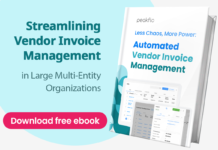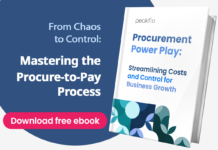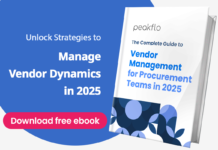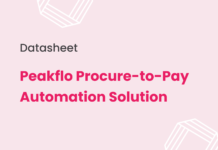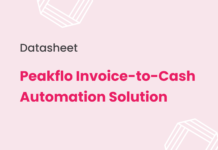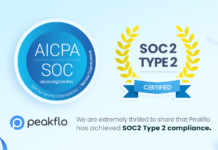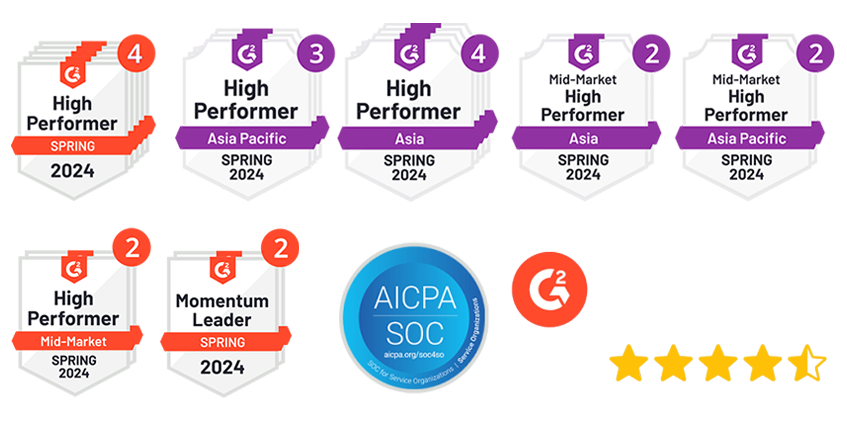Every accounts payable (AP) team knows the drill. A vendor sends an invoice without a purchase order (PO), and suddenly, everything slows down. You have to figure out who approved the expense, assign the right cost codes, and chase down department heads for approvals—sometimes through endless email threads.
It is frustrating, time-consuming, and risky.
Unlike PO-backed invoices, non-PO invoices do not follow a structured process. There’s no automatic validation, no pre-approved spending limit, and no built-in tracking. A single missing approval can hold up payments, frustrate vendors, and even cause compliance issues.
Now multiply that by hundreds or thousands of invoices every month.
That’s why more enterprises are looking into how to process non-PO invoices efficiently without drowning in manual work. The answer? Automation.
By automating non-PO invoice processing and coding, AP teams can move faster, reduce costly errors, and maintain full visibility over payments. No more back-and-forth emails, misplaced invoices, or last-minute fire drills.
In this guide, we will walk through everything you need to know: the challenges, the benefits, and how to build a frictionless non-PO invoice workflow that keeps vendors happy and AP teams in control.
Understanding Non-PO Invoices
Most invoices go through a structured purchase order (PO) process—meaning the company issues a PO before the vendor provides goods or services. But what about expenses that don’t fit neatly into that system? That’s where non-PO invoices come in.
Think of it this way: Let’s say your company hires an IT consultant for urgent troubleshooting. There’s no time to go through the procurement process and create a PO. The consultant fixes the issue, submits an invoice, and now it lands on your desk in accounts payable (AP).
What happens next? Unlike PO invoices, where details like cost, approval, and coding are predetermined, a non-PO invoice requires manual processing. Someone has to verify the expense, assign the right account codes, and track down approvals before payment is made.
Why Do Companies Receive Non-PO Invoices?
Not every business expense follows a strict process. In large enterprises, many invoices arrive without a purchase order (PO). Some expenses happen too fast for a PO, while others don’t require one at all.
A PO is a planned purchase approved before a vendor delivers goods or services. But what happens when a company needs something right away or pays for an ongoing service? That’s when a non-PO invoice shows up.
Here are some common reasons non-PO invoices exist:
1. Urgent or Unplanned Purchases
Some things can not wait for a PO. A broken server, an emergency repair, or a last-minute business trip—these expenses happen fast. Vendors send an invoice, and the company sorts it out later.
2. Recurring Service Payments
Many businesses pay for utilities, software, and maintenance without creating a PO every month. These services run on a contract, and the vendor bills the company on a schedule.
3. Professional Services
Law firms, consultants, and marketing agencies do not always use POs. They bill by project, hours, or milestones, making non-PO invoices the standard for their work.
4. Department Purchases
Sometimes, teams buy small items without going through procurement. It could be office supplies, a quick catering order, or event tickets. These costs still need approval, but they do not start with a PO.
The Real Challenges of Non-PO Invoices
Non-PO invoices may seem like small, everyday transactions, but they add up fast. Without a structured process, they create delays, errors, and unnecessary costs that impact the entire accounts payable system.
If your team doesn’t have a clear way to process non-PO invoices, problems start to pile up. Here is how.
1. Slower Approvals Mean Late Payments
PO-backed invoices follow a pre-approved process. But non-PO invoices? They have to go through extra layers of approval. If the right person isn’t available or forgets to respond, payments get delayed. Late payments damage vendor relationships, trigger penalties, and even hurt future negotiations.
2. Invoice Errors Make Financial Reporting Unreliable
Without a PO, AP teams must manually assign the right account codes before processing a non-PO invoice. Mistakes are common—wrong cost centers, incorrect tax calculations, or duplicate charges. These errors distort financial records and can cause compliance issues during audits.
3. Duplicate Payments Drain Company Resources
With manual processing, invoices can slip through the cracks. A vendor might resend an invoice for a late payment, and if there’s no tracking system, AP could pay it twice. Recovering that money takes time, and not every vendor is quick to issue refunds.
4. Lack of Visibility Creates Budgeting Problems
When purchases happen outside the PO system, finance teams lose control over spending. If departments keep making small, unapproved purchases, costs spiral out of control. This makes budgeting harder and increases the risk of fraud.
How to Process Non-PO Invoices Efficiently with Automation?
When AP teams rely on manual processing, they spend hours tracking down approvals, fixing mistakes, and making sure vendors get paid. Errors are common, payments get delayed, and financial reports become less reliable.
That’s why more companies are switching to automation. By automating how to process non-PO invoices, businesses can speed up approvals, reduce errors, and keep financial records accurate.
Why Manual Processing Slows Everything Down?
Processing non-PO invoices by hand creates delays and risks. Every invoice requires:
- Manual review to confirm the expense is valid
- GL coding to assign costs to the right category
- Approval requests that often get stuck in email chains
- Data entry checks to prevent duplicate payments
With so many steps, errors happen. Missing details, wrong codes, and delayed approvals cause late payments, extra work, and vendor frustration.
Benefits of Non-PO Invoice Automation: How It Fixes the Problem?
With automation, non-PO invoices move through the system quickly and accurately. Instead of manual tasks, the software handles everything. Here is how it works:
Smart tools scan the invoice, pull out key details, and enter them into the system. No more manual data entry.
- Instant GL Coding & Cost Assignment
The system applies the correct GL codes and cost centers based on past transactions—eliminating human errors.
Invoices go straight to the right manager with automatic reminders to prevent delays. No more chasing approvals.
- Duplicate Payments & Fraud Detection
The system flags duplicate invoices, unusual charges, and potential fraud before a payment is made.
- Clear Reporting & Real-Time Tracking
Finance teams get instant visibility into pending invoices, approval status, and spending patterns.
What is Non-PO Invoice Coding and Why Does It Matter?
Approving a non-PO invoice is just one step. Before a payment goes through, the invoice must be coded correctly.
Every expense needs a general ledger (GL) account code, cost center, and sometimes a project code. This tells the finance team where the money is going and ensures the company tracks spending accurately.
How Non-PO Invoice Coding Works?
When an invoice arrives without a purchase order, it lacks predefined financial details. That means AP teams must manually assign the right codes based on the type of expense and the department responsible.
For example:
- A consulting fee invoice might be coded under “Professional Services” (GL Code: 6200) and linked to the Marketing Department.
- A software subscription invoice could be assigned to “IT Software Expenses” (GL Code: 7105) under the IT Budget.
- A last-minute repair bill might go under “Facility Maintenance” (GL Code: 4300) for the Operations Team.
These codes must be accurate because they affect budgets, tax filings, and compliance reports.
How Automation Fixes Non-PO Invoice Coding?
Instead of relying on manual data entry, automation ensures that every invoice is coded accurately and instantly. Here is how it works:
- AI-Based GL Coding – The system automatically recognizes vendor patterns and applies the correct GL account codes and cost centers.
- Pre-Set Rules & Machine Learning – The system applies pre-approved coding rules based on past transactions if an invoice comes from a known vendor.
- Error Detection – The system flags the issue before payment processing if a GL code is missing or incorrect.
- Seamless ERP Integration – The system syncs coded invoices with ERP and accounting software, keeping financial data up to date.
Now, let us consider the business impact of smart non-PO invoice coding:
- Smoother Approvals – Every invoice is coded correctly the first time, eliminating back-and-forth corrections.
- Faster Month-End Closing – Finance teams don’t need to hunt for missing GL codes.
- Better Budget Control – Every expense is tracked in real-time.
- Improved Audit Compliance – Clean records make tax filings and audits stress-free.
Challenges in Automating Non-PO Invoice Processing
Automation makes invoice processing faster and more accurate. But it’s not always easy to set up. Many companies struggle with errors, delays, and system issues. If automation isn’t done right, it can cause more problems than it solves.
Here are the biggest challenges companies face when automating non-PO invoice processing.
1. Unstructured and Incomplete Invoice Data
Automation needs clear, organized data to work well. But non-PO invoices come in different formats. Some are missing key details, such as:
- Vendor names
- Invoice numbers
- Payment terms
- Tax information
If an invoice lacks important data, the system can’t process it correctly. AP teams then have to fix errors manually, which slows everything down.
2. Approval Delays Due to Complex Workflows
PO invoices follow a set approval process. Non-PO invoices do not. Some need one approval, while others require multiple approvals from different departments.
Automation systems often struggle with this unpredictability. Common issues include:
- Invoices sent to the wrong approver
- Approval requests stuck in long email chains
- Managers ignoring notifications, causing payment delays
If automation can’t handle complex approvals, invoices still need manual tracking and follow-ups.
3. Employees Struggle to Adapt
People are used to their old workflows. Even when automation makes things easier, some don’t trust it or find it hard to use.
Common problems include:
- Teams still checking invoices manually
- Slow adoption, with employees avoiding the system
- Errors from incorrect use of automation tools
Without proper training, automation won’t deliver full benefits.
4. Integration Issues with Existing Systems
Most companies use older accounting and ERP systems. Many automation tools don’t integrate easily with these platforms.
Common problems include:
- Different data formats cause errors when syncing invoices
- Limited system compatibility, making real-time updates difficult
- Missing or duplicate invoices due to broken connections
If systems don’t work well together, automation creates more problems instead of fixing them.
5. Errors in Processing Special Invoices
Not every invoice follows a standard pattern. Some have discounts, special terms, or extra charges that automation may not recognize.
When this happens, the system might:
- Apply the wrong tax rate
- Misclassify expenses
- Reject valid invoices
AP teams then have to step in to correct mistakes. This adds extra work and slows the process.
6. High Costs with Uncertain Savings
Automation requires investment in software, setup, and training. If it’s not planned well, companies may not see the expected savings.
Common financial risks include:
- Paying for unnecessary features
- Underusing automation tools, reducing efficiency
- Delays in setup, pushing back cost benefits
Without proper planning, automation can be expensive and ineffective.
Best Practices for Automating Non-PO Invoice Processing
Automation is only as good as the system behind it. If the setup is weak, invoices may still get stuck, errors may increase, and approvals may take too long. A strong automation plan helps businesses process invoices quickly while keeping full control over spending. Let us explore the tips below.
1. Use Clean and Complete Invoice Data
Automation works best when invoice data is clear and accurate. Many non-PO invoices arrive in different formats, with some missing key details. If an invoice lacks a vendor name, invoice number, or tax amount, the system may not process it correctly. This leads to delays, forcing AP teams to step in and fix mistakes manually.
To prevent this, businesses should use smart data capture tools that check invoices for missing fields. A system that can recognize different invoice formats and fill in missing details reduces errors and speeds up processing. The fewer mistakes at the start, the smoother the entire process.
2. Create Flexible Approval Workflows
Unlike PO invoices, non-PO invoices don’t follow a fixed approval process. Some need one quick approval, while others require multiple reviews. A system that can’t handle different approval levels will slow things down. If an invoice gets routed to the wrong person or sits in someone’s inbox for too long, vendors will not get paid on time.
An effective automation system routes invoices to the right person immediately. It also sends reminders when approvals take too long. The system should escalate the invoice to the next approver if someone is unavailable. This keeps things moving and prevents unnecessary delays.
3. Make Sure Automation Integrates with Accounting Systems
A major reason automation fails is poor integration with ERP and accounting software. If invoice data doesn’t transfer smoothly, companies may see missing records, duplicate payments, or incorrect expense reports.
Before launching automation, businesses should check that their systems can communicate with each other. Testing the connection before full implementation prevents problems later. A well-integrated system ensures invoices move from approval to payment without errors or extra manual work.
4. Train Employees to Use Automation Properly
Even the best automation system won’t work if employees don’t know how to use it. Some may feel unsure about automation or worry it will take over their jobs. Others may avoid using it because they don’t fully understand how it works.
Proper training helps employees feel comfortable with automation. Hands-on practice, step-by-step guides, and ongoing support ensure that teams can use the system effectively. The more confident employees are, the faster invoices get processed and the fewer errors occur.
5. Track Performance and Make Adjustments
Automation should make invoice processing easier, not harder. If invoices still get stuck, errors keep happening, or payments are delayed, something isn’t working. Businesses need to monitor performance regularly to catch and fix issues.
Tracking processing time, approval speed, and error rates helps companies see where the system needs improvement. Small adjustments, like updating approval workflows or improving data capture, can make a big difference. A system that improves over time will provide the best results.
Why Peakflo is the Best Solution for Automating Non-PO Invoice Processing and Coding?
Are your non-PO invoices stuck in approval loops? Do errors in coding lead to misclassified expenses? Are slow payments frustrating your vendors? If these problems sound familiar, it’s time for a change.
Manual invoice processing is time-consuming, full of errors, and difficult to track. Peakflo automates the entire process—from invoice capture to payment—so you can process invoices faster, code them correctly, and get full visibility into your accounts payable.
1. Instant Invoice Capture Without Manual Entry
Entering invoice details manually takes time. It’s also where most errors happen. Peakflo’s AI-powered invoice OCR captures invoice data instantly, no matter the format.
It extracts vendor details, tax amounts, payment terms, and any custom fields you need. The system organizes everything in one place so that invoices are always accurate and complete before moving to the next step. No missing details. No manual corrections.
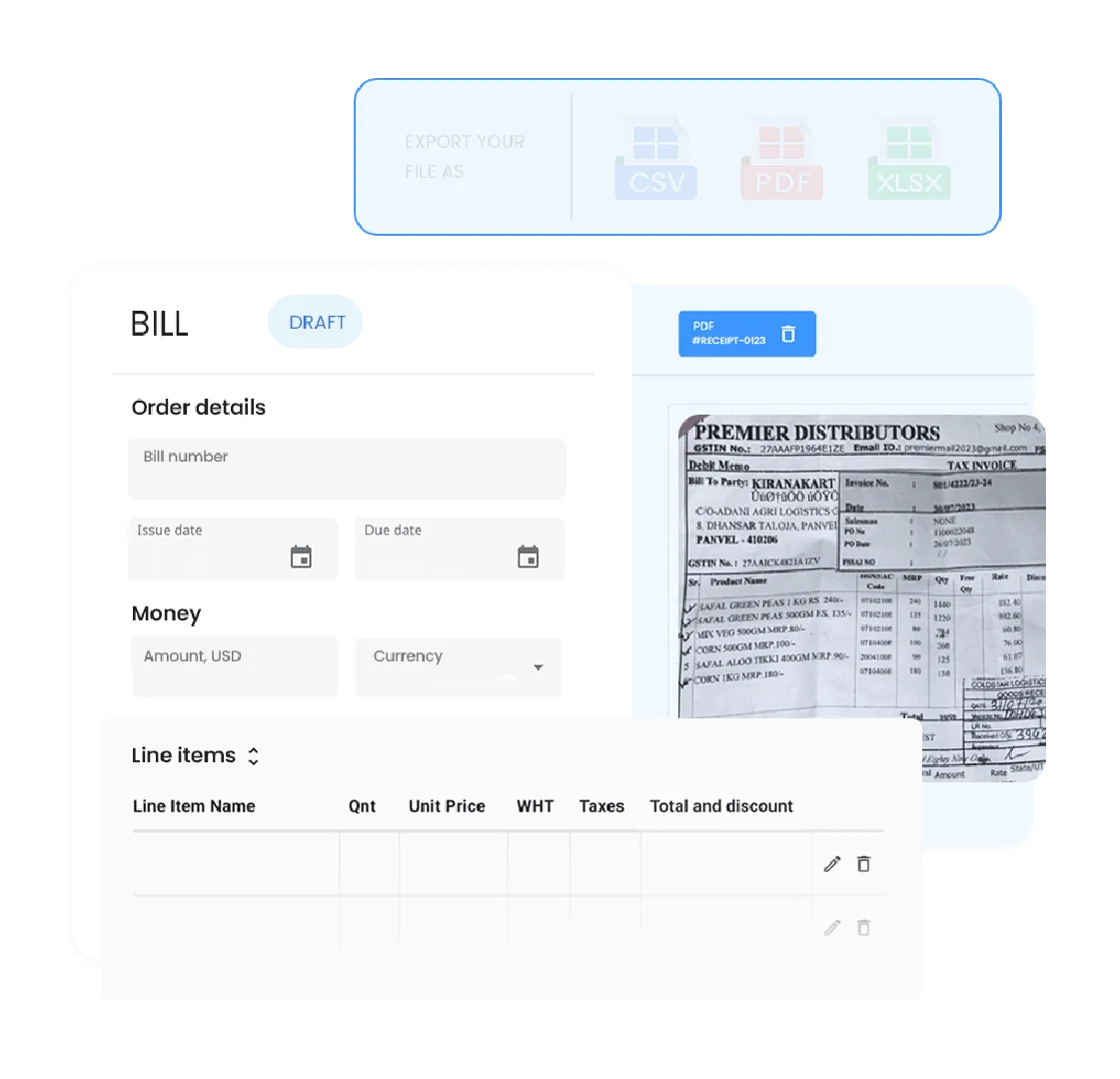
2. Automatic Coding for Faster Processing
Manually coding no-PO invoices is time-consuming and prone to errors. Peakflo’s AI agents eliminate the hassle by intelligently automating GL coding.
Using historical data and pattern recognition, the AI agents analyze invoice details—vendor, description, amount, and category—to accurately assign the right general ledger (GL) code, cost center, and project category. This ensures consistency, reduces misclassification, and keeps financial records error-free.
3. Faster Approvals Without the Delays
How many times have you had to chase someone down for invoice approval? With Peakflo, approvals happen without delays.
The system automatically sends invoices to the right person based on approval rules. If an approver is unavailable, it delegates the request so that invoices don’t get stuck.
4. Seamless Integration with Your Accounting System
Manually entering invoices into ERP or accounting software creates duplicates, missing records, and reconciliation errors. Peakflo solves this by syncing invoice data automatically.
Once an invoice is approved and coded, it moves directly into your accounting system. No extra steps. No manual uploads. Just clean, accurate data that keeps your books up to date.
Conclusion
Tired of slow approvals, coding mistakes, and missing invoices? Manual processing takes too long and creates too many problems. Peakflo fixes that.
Peakflo automates every step of how to process non-PO invoices—from invoice capture to coding, approvals, and payments.. No chasing emails. No fixing errors. No wasting time.
You get faster payments, better accuracy, and complete control over your accounts payable. Vendors stay happy. Finance teams work smarter.
Why keep struggling with slow, manual processes? See how Peakflo transforms invoice automation. Take the Demo Tour today and experience the difference.










![Why AI Sales Calls Are Making Good Sales Reps Even Better [2025 Guide] ai sales calls](https://blog.peakflo.co/wp-content/uploads/2025/09/65168cf6-3001-4733-8cbc-12d5684cf449-218x150.webp)







